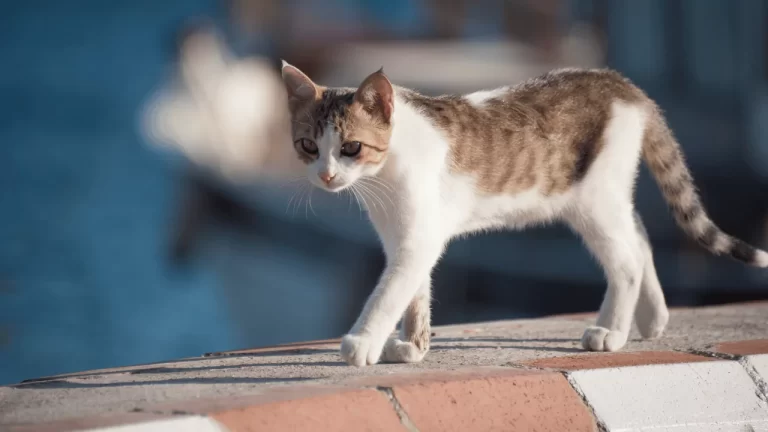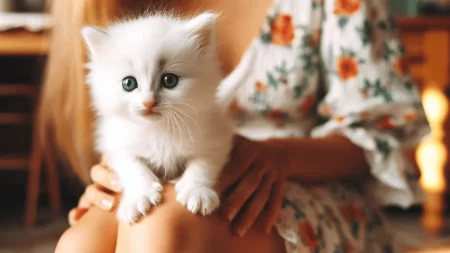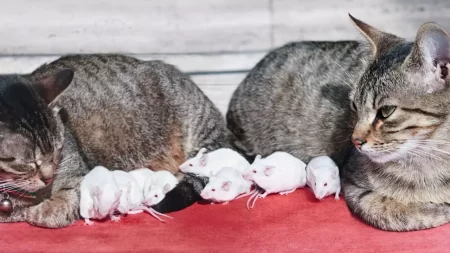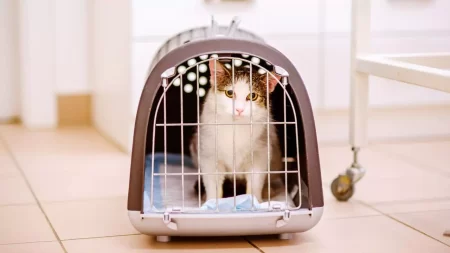It’s not uncommon to see cats walking sideways or crab-walking. This unusual gait may look silly and cute, but could point to an underlying health issue. Understanding the possible reasons and seeking veterinary advice can help ensure your cat’s wellbeing.
This article explores 9 potential causes for feline sideways walking, related health problems, symptoms to watch for, and expert veterinarian perspectives on this quirky behavior.
Possible Reasons for Cat Sideways Walk
There are several possible explanations why your cat is walking sideways or crab-walking:
1. Curiosity
Healthy cats are innately curious. Walking sideways allows them to scan their surroundings and explore in a new way. It stretches their perspective, letting them view things from fresh angles. This investigative behavior is completely normal.
2. Communication
Cats use body language and movement to communicate. Unusual gaits like sideways walking could be your cat’s way of getting your attention. It may indicate a desire for play, food, or affection. Paying attention when they walk this way can help understand their needs.
3. Stretching Muscles
Sideways walking lengthens some of kitty’s leg, back, and core muscles in ways normal gait doesn’t. Cats instinctively know this and may sideways walk to enjoy a good stretch. It feels pleasing to them. This reason is harmless.
4. Territory Marking
By crab-walking around an area, cats spread their scent from special glands in their paws. This can mark territory and establish boundaries. It’s a primal feline behavior you may witness if your home has multiple cats.
5. Seeking Attention
Some cats quickly learn that unique movements garner owner reactions. Sideways walking may be your cat’s bid for attention or entertainment. Responding with play or affection reinforces this attention-seeking behavior.
6. Illness or Pain
Trouble walking normally can indicate injury, arthritis, vertigo, infection, or other health issues. Cats compensate by sideways walking. Any signs of discomfort or changes in mobility warrant a veterinary visit.
7. Boredom or Restlessness
Insufficient physical and mental stimulation can lead to feline boredom. Sideways walking provides enrichment. Increase interactive playtime and activities to fulfill their needs. Restless pacing or vocalizing can also signal boredom.
8. Mimicking Other Cats
Cats are excellent imitators, often picking up behaviors from others. If one house cat sideways walks, others may start too. It becomes socialized. This mimicry is harmless if the original cat is healthy.
9. Trying to Escape
Fear, stress, or dislike of a situation may prompt sideways scurrying in an effort to flee. Common triggers include loud noises, strangers, other animals, or disliked handling. Pay attention to what’s upsetting your cat.
Potential Health Issues Related to Cat Sideways Walk
While sideways walking itself rarely indicates serious issues, it can accompany or result from:
1. Arthritis
Degenerative joint changes from cartilage wear and inflammation. Makes normal movement painful. More prevalent in older, overweight cats. Diagnosed via exam, x-rays. Managed with supplements, medication, surgery.
2. Neurological Problems
Issues affecting the brain, spine, nerves. May involve balance, coordination. Causes include trauma, tumors, infections, toxins, organ failure. Diagnosed through neurological exam, MRI, bloodwork. Treatment depends on cause.
3. Infection
Bacterial or viral infections, like feline distemper, calicivirus, abscesses cause fever, inflammation, pain. Antibiotics, drainage prescribed. Ongoing vet care essential.
4. Pain
Injuries, dental issues, bone cancer and other conditions cause orthopedic or neuropathic pain interfering with normal gait. Requires diagnostics, targeted treatment.
5. Restlessness
Anxiety, cognitive issues, hyperthyroidism, and other systemic diseases increase agitation and pacing. Underlying disorder must be managed for symptoms to resolve.
Symptoms of Cat Sideways Walk
Watch for these additional signs along with altered walking:
- Tilted head
- Unsteadiness or falling over
- Ear scratching or head shaking
- Vomiting or loss of appetite
- Dizziness or confusion
Rapid onset of multiple symptoms warrants prompt veterinary examination. Mention the sideways walking to help diagnosis. Discuss any recent changes in behavior or health. Be ready to answer questions about diet, environment, other pets/people in home.
Expert Vet Thoughts on Cat Sideways Walk
To gain professional insight, I consulted respected veterinarian Dr. Sarah Elliott regarding feline sideways walking. She advises:
“Sideways walking on its own isn’t necessarily problematic. Often it’s temporary curiosity or playfulness. However, if accompanied by other neurological signs like head-tilt or loss of balance, see a vet immediately. It can indicate injury, inner ear infection, or worse. Don’t delay. Even minor stumbles might mean painful joints. Have your veterinarian thoroughly examine mouth, teeth, limbs, spine, ears. In older cats, bloodwork helps detect hyperthyroidism, kidney issues, and arthritis clues. Whatever the cause, we’ll work to pinpoint it and support your cat’s optimal health and mobility.”
In summary, many explanations exist for feline crab-walking or sideways gait. Sometimes it’s harmless fun, other times a clue to illness. Pay attention to context, other symptoms, and your cat’s wellbeing. When unsure, veterinary advice provides peace of mind and helps keep your cat happy on all four feet.







